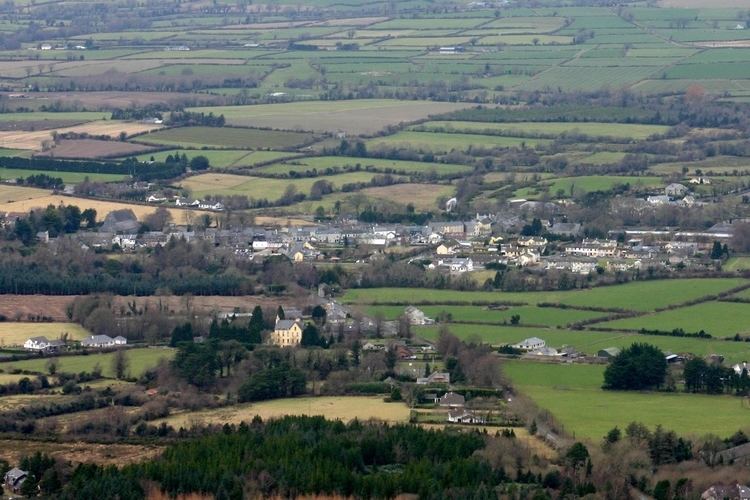Dialing code 0 52, +000 353 (0)52 Elevation 54 m Local time Tuesday 12:01 PM | Dáil Éireann Tipperary South Irish Grid Reference S001137 Population 509 (2006) Dialling code 0 | |
 | ||
Weather 8°C, Wind S at 32 km/h, 90% Humidity | ||
Clogheen (Irish: Chloichín an Mhargaid, meaning "Little Stone of the Market") is a village in County Tipperary, Ireland. The census of 2006 recorded the population at 509 people.
Contents
Map of Clogheen, Co. Tipperary, Ireland
Location
It lies in the Galtee-Vee Valley with the Galtee Mountains to the north and the Knockmealdowns in close proximity to the south. The River Tar which is a tributary of the Suir runs through the village. It is located on the R665 and R668 regional roads. The nearest large towns are Cahir and Mitchelstown, approximately 14 and 20 kilometres away, respectively.
Transport
During the week it is served five times a day in each direction by Bus Éireann route 245 linking it to Clonmel, Mitchelstown, Fermoy and Cork. At the weekend there are three buses each way.
History
The first substantial records of the village date from the Cromwellian period, but the village did not come to note until the 18th and 19th centuries. It then became a local centre of trade and commerce. The village takes its modern form from the 19th century with a wide area that was formerly the Market Square (and still named so) and a number of townhouses in the Georgian style. Evidence of its former economic activity exists in the form of a number of ruined mills and accompanying mill-streams in the environs of the village, as well as several large estates.
A former Catholic parish priest of Clogheen, Nicholas Sheehy, is buried at Shanrahan graveyard just outside the village, having been executed in 1766. Sheehy had been a vocal opponent of Anglican Church tithes. When a secret oath-bound society known as the Whiteboys, formed in the parish, elements of the Protestant Ascendancy conspired to make him an example to those who questioned or threatened their powers. After a kangaroo trial in Clonmel, he was hung for murder and treason, crimes with little basis, no reliable witnesses, and no proof.
The stately Shanbally Castle was situated 4.5 kilometres outside the village. It was built circa 1820 for the 1st Viscount Lismore, designed by the architect John Nash, and was demolished by the State in 1960.
Daniel O'Connell addressed a crowd of up to 50,000 people in the town on 28 September 1828, as part of a public demonstration to demand Catholic emancipation.
Lewis' Topographical Dictionary of 1837 notes Clogheen as being located in the barony of Iffa and Offa West and reported that there were 1,928 inhabitants, a military barracks for the accommodation of two troops of cavalry, an extensive brewery, plus seven flour mills in the town and neighbourhood.
Modern times
It is now primarily an agricultural town but it is well linked to the nearby economic centres of Clonmel and Mitchelstown and the larger economies of Cork, Limerick, and Waterford. Clogheen gained national notoriety in 2000 when a former hotel, which was due to house refugees, was damaged by fire in an arson attack. The event reputedly inspired the Gerry Stembridge television film, Black Day at Black Rock. The problems reflected a general upheaval in Irish rural society in which the local population experienced net immigration for the first time in its modern history.
Sport
The local GAA club is Fr. Sheehys. The club is part of the South division of Tipperary GAA and represents the areas of Clogheen and Burncourt.
